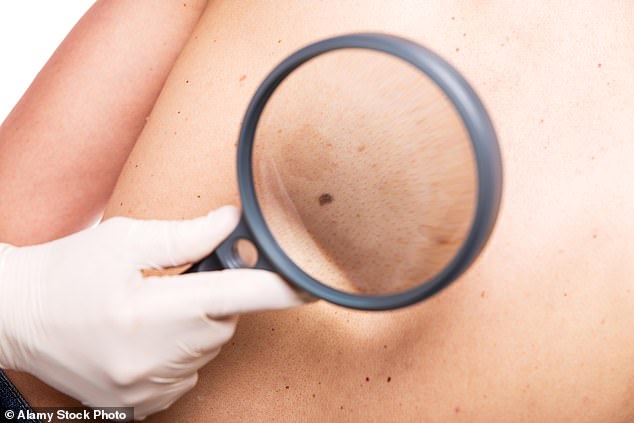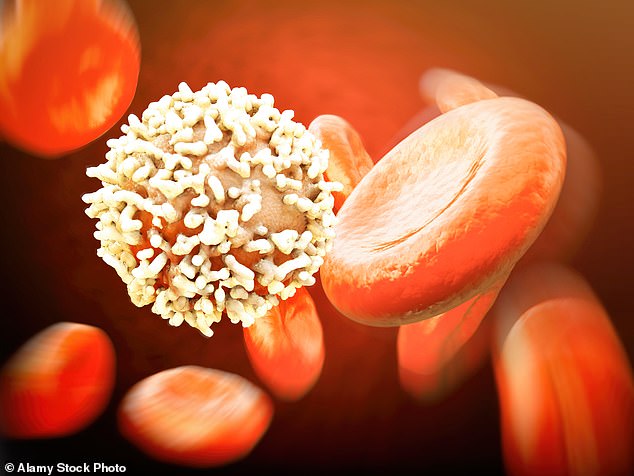<!–
<!–
<!– <!–
<!–
<!–
<!–
Scientists have found a new way to detect any type of skin cancer in seconds.
Currently, the 270,000 new cases of skin cancer diagnosed each year in the UK are identified using a microscope-type device or scans such as computed tomography (CT) scanning.
These scans use high-frequency radio waves (a type of radiation) to create a detailed picture of what’s happening inside the body, but involve a hospital visit and bulky equipment.
Although they can detect disease in its early stages, the high-frequency radio waves used by scanners can also damage healthy cells in the body. They are also time-consuming and expensive.
But researchers from Queen Mary University of London and the University of Glasgow have found another solution that they say could revolutionize skin cancer diagnosis.

Scientists have found a new way to detect any type of skin cancer in seconds. (Stock image)
They developed a sensor that uses low-frequency terahertz (THz) radiation that is less harmful, more precise than using a microscope and just as precise, but safer, than CT scans.
This is the same technology that will be used in the next generation of 6G mobile phones.
While traditional scanning techniques create images of the tissue, THz scanning examines how the tissue responds to certain radio frequencies. This means it can identify even small numbers of cancer cells, the researchers say.
They claim the new sensor can detect skin cancer “in seconds” and with “exceptional sensitivity”.
In the future, it could be integrated into a handheld device so that patients can be diagnosed more easily, even at home.
In a study published in the journal IEEE Transactions on Biomedical Engineering, scientists tested the sensor on 3D synthetic skin to see if it could detect subtle cellular changes.
After shining THz radiation onto skin samples, they monitored the radio waves and found that with cancerous tissue, the radio waves bounced back with three particular characteristics.
This information was then fed into a computer program that created graphs on a screen.


They developed a sensor that uses low-frequency terahertz (THz) radiation that is less harmful, more precise than using a microscope and just as precise, but safer, than CT scans.
This technology allows “more precise differentiation between healthy and cancerous cells and to measure the degree of malignancy of the tissue”, said Dr Shohreh Nourinovin, research associate at Queen Mary’s School of Electronic and Computer Engineering, who led the study.
In laboratory tests, the sensor successfully identified normal skin cells and basal cell carcinoma cells in less than five minutes.
Researchers say this ability to detect cancer at an early stage has immense potential to improve patient outcomes.
Professor Qammer Abbasi, co-director of the Communication Sensing & Imaging Hub at the University of Glasgow’s James Watt School of Engineering, who was involved in the study, says the new technology could be “particularly beneficial for people who cannot not go to hospital or live in remote areas’.
He plans to use it to screen for skin cancer. If it detects cancer, more detailed checks would be necessary.
“The earlier we can diagnose skin cancer, the better the outcome.” This technology could save countless lives,” he adds.
Commenting on the technology, Dr Hattie Brooks, head of research information at the charity Cancer Research UK, said: “While further research is needed before this biosensor can move from the bench to the bedside, It’s exciting to see promising new innovations that could one day help more people affected by certain types of skin cancer be diagnosed at an earlier stage.
